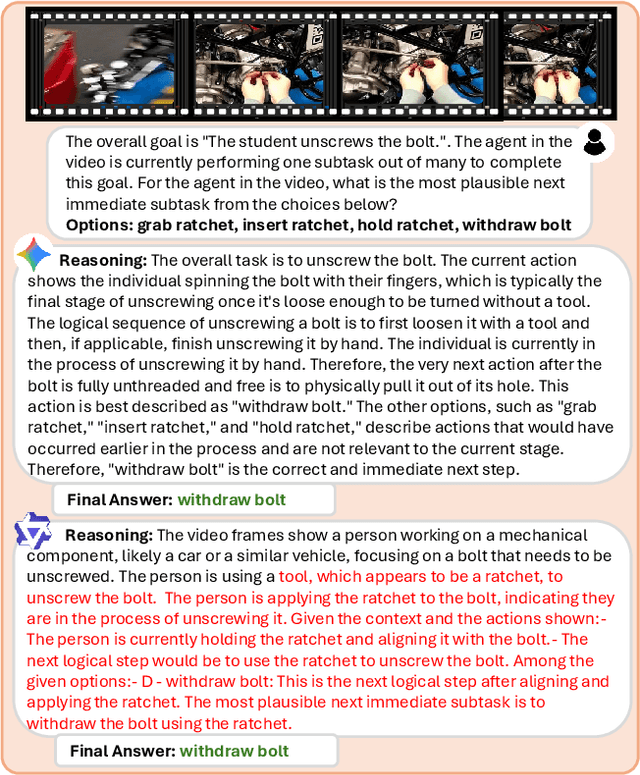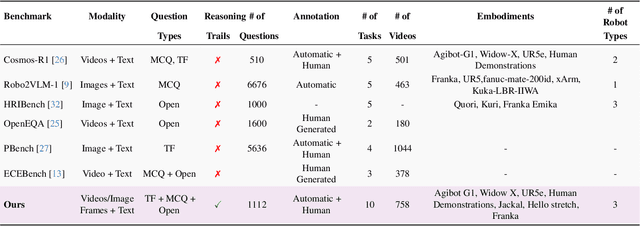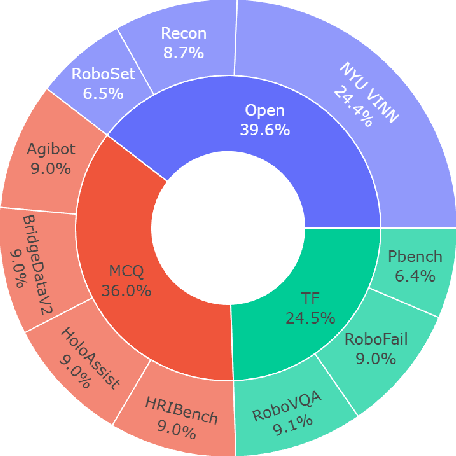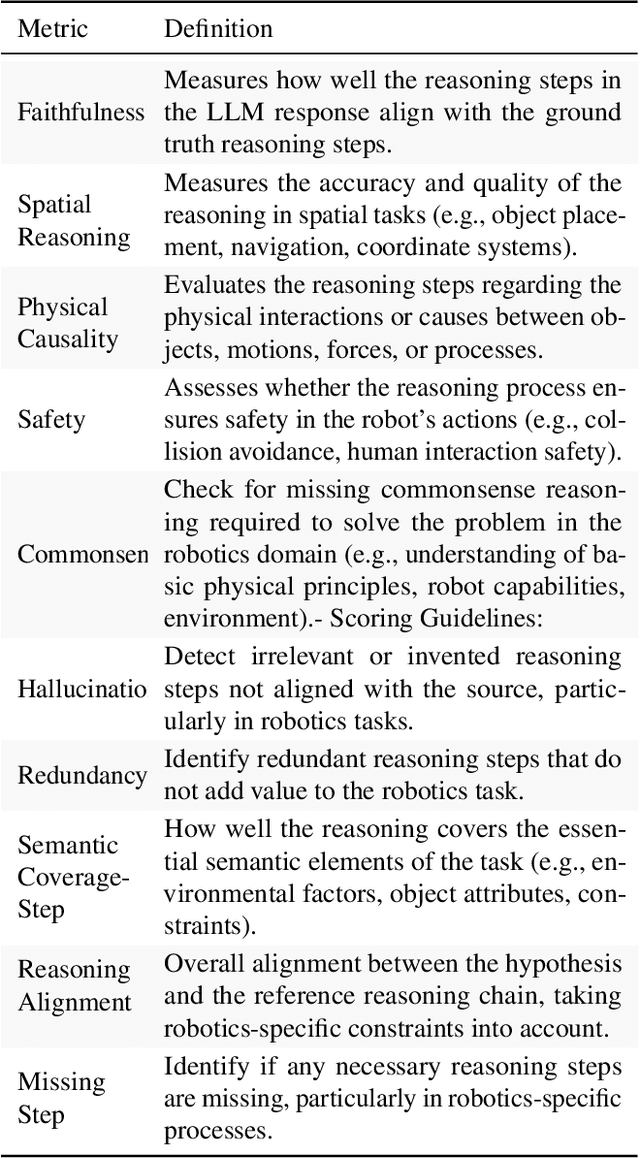Ahmed Heakl
Dr.LLM: Dynamic Layer Routing in LLMs
Oct 14, 2025Abstract:Large Language Models (LLMs) process every token through all layers of a transformer stack, causing wasted computation on simple queries and insufficient flexibility for harder ones that need deeper reasoning. Adaptive-depth methods can improve efficiency, but prior approaches rely on costly inference-time search, architectural changes, or large-scale retraining, and in practice often degrade accuracy despite efficiency gains. We introduce Dr.LLM, Dynamic routing of Layers for LLMs, a retrofittable framework that equips pretrained models with lightweight per-layer routers deciding to skip, execute, or repeat a block. Routers are trained with explicit supervision: using Monte Carlo Tree Search (MCTS), we derive high-quality layer configurations that preserve or improve accuracy under a compute budget. Our design, windowed pooling for stable routing, focal loss with class balancing, and bottleneck MLP routers, ensures robustness under class imbalance and long sequences. On ARC (logic) and DART (math), Dr.LLM improves accuracy by up to +3.4%p while saving 5 layers per example on average. Routers generalize to out-of-domain tasks (MMLU, GSM8k, AIME, TruthfulQA, SQuADv2, GPQA, PIQA, AGIEval) with only 0.85% accuracy drop while retaining efficiency, and outperform prior routing methods by up to +7.7%p. Overall, Dr.LLM shows that explicitly supervised routers retrofit frozen LLMs for budget-aware, accuracy-driven inference without altering base weights.
How Good are Foundation Models in Step-by-Step Embodied Reasoning?
Sep 18, 2025



Abstract:Embodied agents operating in the physical world must make decisions that are not only effective but also safe, spatially coherent, and grounded in context. While recent advances in large multimodal models (LMMs) have shown promising capabilities in visual understanding and language generation, their ability to perform structured reasoning for real-world embodied tasks remains underexplored. In this work, we aim to understand how well foundation models can perform step-by-step reasoning in embodied environments. To this end, we propose the Foundation Model Embodied Reasoning (FoMER) benchmark, designed to evaluate the reasoning capabilities of LMMs in complex embodied decision-making scenarios. Our benchmark spans a diverse set of tasks that require agents to interpret multimodal observations, reason about physical constraints and safety, and generate valid next actions in natural language. We present (i) a large-scale, curated suite of embodied reasoning tasks, (ii) a novel evaluation framework that disentangles perceptual grounding from action reasoning, and (iii) empirical analysis of several leading LMMs under this setting. Our benchmark includes over 1.1k samples with detailed step-by-step reasoning across 10 tasks and 8 embodiments, covering three different robot types. Our results highlight both the potential and current limitations of LMMs in embodied reasoning, pointing towards key challenges and opportunities for future research in robot intelligence. Our data and code will be made publicly available.
Guaranteed Guess: A Language Modeling Approach for CISC-to-RISC Transpilation with Testing Guarantees
Jun 17, 2025Abstract:The hardware ecosystem is rapidly evolving, with increasing interest in translating low-level programs across different instruction set architectures (ISAs) in a quick, flexible, and correct way to enhance the portability and longevity of existing code. A particularly challenging class of this transpilation problem is translating between complex- (CISC) and reduced- (RISC) hardware architectures, due to fundamental differences in instruction complexity, memory models, and execution paradigms. In this work, we introduce GG (Guaranteed Guess), an ISA-centric transpilation pipeline that combines the translation power of pre-trained large language models (LLMs) with the rigor of established software testing constructs. Our method generates candidate translations using an LLM from one ISA to another, and embeds such translations within a software-testing framework to build quantifiable confidence in the translation. We evaluate our GG approach over two diverse datasets, enforce high code coverage (>98%) across unit tests, and achieve functional/semantic correctness of 99% on HumanEval programs and 49% on BringupBench programs, respectively. Further, we compare our approach to the state-of-the-art Rosetta 2 framework on Apple Silicon, showcasing 1.73x faster runtime performance, 1.47x better energy efficiency, and 2.41x better memory usage for our transpiled code, demonstrating the effectiveness of GG for real-world CISC-to-RISC translation tasks. We will open-source our codes, data, models, and benchmarks to establish a common foundation for ISA-level code translation research.
VideoMolmo: Spatio-Temporal Grounding Meets Pointing
Jun 05, 2025Abstract:Spatio-temporal localization is vital for precise interactions across diverse domains, from biological research to autonomous navigation and interactive interfaces. Current video-based approaches, while proficient in tracking, lack the sophisticated reasoning capabilities of large language models, limiting their contextual understanding and generalization. We introduce VideoMolmo, a large multimodal model tailored for fine-grained spatio-temporal pointing conditioned on textual descriptions. Building upon the Molmo architecture, VideoMolmo incorporates a temporal module utilizing an attention mechanism to condition each frame on preceding frames, ensuring temporal consistency. Additionally, our novel temporal mask fusion pipeline employs SAM2 for bidirectional point propagation, significantly enhancing coherence across video sequences. This two-step decomposition, i.e., first using the LLM to generate precise pointing coordinates, then relying on a sequential mask-fusion module to produce coherent segmentation, not only simplifies the task for the language model but also enhances interpretability. Due to the lack of suitable datasets, we curate a comprehensive dataset comprising 72k video-caption pairs annotated with 100k object points. To evaluate the generalization of VideoMolmo, we introduce VPoS-Bench, a challenging out-of-distribution benchmark spanning five real-world scenarios: Cell Tracking, Egocentric Vision, Autonomous Driving, Video-GUI Interaction, and Robotics. We also evaluate our model on Referring Video Object Segmentation (Refer-VOS) and Reasoning VOS tasks. In comparison to existing models, VideoMolmo substantially improves spatio-temporal pointing accuracy and reasoning capability. Our code and models are publicly available at https://github.com/mbzuai-oryx/VideoMolmo.
SVRPBench: A Realistic Benchmark for Stochastic Vehicle Routing Problem
May 29, 2025Abstract:Robust routing under uncertainty is central to real-world logistics, yet most benchmarks assume static, idealized settings. We present SVRPBench, the first open benchmark to capture high-fidelity stochastic dynamics in vehicle routing at urban scale. Spanning more than 500 instances with up to 1000 customers, it simulates realistic delivery conditions: time-dependent congestion, log-normal delays, probabilistic accidents, and empirically grounded time windows for residential and commercial clients. Our pipeline generates diverse, constraint-rich scenarios, including multi-depot and multi-vehicle setups. Benchmarking reveals that state-of-the-art RL solvers like POMO and AM degrade by over 20% under distributional shift, while classical and metaheuristic methods remain robust. To enable reproducible research, we release the dataset and evaluation suite. SVRPBench challenges the community to design solvers that generalize beyond synthetic assumptions and adapt to real-world uncertainty.
CASS: Nvidia to AMD Transpilation with Data, Models, and Benchmark
May 22, 2025Abstract:We introduce \texttt{CASS}, the first large-scale dataset and model suite for cross-architecture GPU code transpilation, targeting both source-level (CUDA~$\leftrightarrow$~HIP) and assembly-level (Nvidia SASS~$\leftrightarrow$~AMD RDNA3) translation. The dataset comprises 70k verified code pairs across host and device, addressing a critical gap in low-level GPU code portability. Leveraging this resource, we train the \texttt{CASS} family of domain-specific language models, achieving 95\% source translation accuracy and 37.5\% assembly translation accuracy, substantially outperforming commercial baselines such as GPT-4o, Claude, and Hipify. Our generated code matches native performance in over 85\% of test cases, preserving runtime and memory behavior. To support rigorous evaluation, we introduce \texttt{CASS-Bench}, a curated benchmark spanning 16 GPU domains with ground-truth execution. All data, models, and evaluation tools are released as open source to foster progress in GPU compiler tooling, binary compatibility, and LLM-guided hardware translation. Dataset and benchmark are on \href{https://huggingface.co/datasets/MBZUAI/cass}{\textcolor{blue}{HuggingFace}}, with code at \href{https://github.com/GustavoStahl/CASS}{\textcolor{blue}{GitHub}}.
KITAB-Bench: A Comprehensive Multi-Domain Benchmark for Arabic OCR and Document Understanding
Feb 20, 2025Abstract:With the growing adoption of Retrieval-Augmented Generation (RAG) in document processing, robust text recognition has become increasingly critical for knowledge extraction. While OCR (Optical Character Recognition) for English and other languages benefits from large datasets and well-established benchmarks, Arabic OCR faces unique challenges due to its cursive script, right-to-left text flow, and complex typographic and calligraphic features. We present KITAB-Bench, a comprehensive Arabic OCR benchmark that fills the gaps in current evaluation systems. Our benchmark comprises 8,809 samples across 9 major domains and 36 sub-domains, encompassing diverse document types including handwritten text, structured tables, and specialized coverage of 21 chart types for business intelligence. Our findings show that modern vision-language models (such as GPT-4, Gemini, and Qwen) outperform traditional OCR approaches (like EasyOCR, PaddleOCR, and Surya) by an average of 60% in Character Error Rate (CER). Furthermore, we highlight significant limitations of current Arabic OCR models, particularly in PDF-to-Markdown conversion, where the best model Gemini-2.0-Flash achieves only 65% accuracy. This underscores the challenges in accurately recognizing Arabic text, including issues with complex fonts, numeral recognition errors, word elongation, and table structure detection. This work establishes a rigorous evaluation framework that can drive improvements in Arabic document analysis methods and bridge the performance gap with English OCR technologies.
LlamaV-o1: Rethinking Step-by-step Visual Reasoning in LLMs
Jan 10, 2025



Abstract:Reasoning is a fundamental capability for solving complex multi-step problems, particularly in visual contexts where sequential step-wise understanding is essential. Existing approaches lack a comprehensive framework for evaluating visual reasoning and do not emphasize step-wise problem-solving. To this end, we propose a comprehensive framework for advancing step-by-step visual reasoning in large language models (LMMs) through three key contributions. First, we introduce a visual reasoning benchmark specifically designed to evaluate multi-step reasoning tasks. The benchmark presents a diverse set of challenges with eight different categories ranging from complex visual perception to scientific reasoning with over 4k reasoning steps in total, enabling robust evaluation of LLMs' abilities to perform accurate and interpretable visual reasoning across multiple steps. Second, we propose a novel metric that assesses visual reasoning quality at the granularity of individual steps, emphasizing both correctness and logical coherence. The proposed metric offers deeper insights into reasoning performance compared to traditional end-task accuracy metrics. Third, we present a new multimodal visual reasoning model, named LlamaV-o1, trained using a multi-step curriculum learning approach, where tasks are progressively organized to facilitate incremental skill acquisition and problem-solving. The proposed LlamaV-o1 is designed for multi-step reasoning and learns step-by-step through a structured training paradigm. Extensive experiments show that our LlamaV-o1 outperforms existing open-source models and performs favorably against close-source proprietary models. Compared to the recent Llava-CoT, our LlamaV-o1 achieves an average score of 67.3 with an absolute gain of 3.8\% across six benchmarks while being 5 times faster during inference scaling. Our benchmark, model, and code are publicly available.
CAMEL-Bench: A Comprehensive Arabic LMM Benchmark
Oct 24, 2024Abstract:Recent years have witnessed a significant interest in developing large multimodal models (LMMs) capable of performing various visual reasoning and understanding tasks. This has led to the introduction of multiple LMM benchmarks to evaluate LMMs on different tasks. However, most existing LMM evaluation benchmarks are predominantly English-centric. In this work, we develop a comprehensive LMM evaluation benchmark for the Arabic language to represent a large population of over 400 million speakers. The proposed benchmark, named CAMEL-Bench, comprises eight diverse domains and 38 sub-domains including, multi-image understanding, complex visual perception, handwritten document understanding, video understanding, medical imaging, plant diseases, and remote sensing-based land use understanding to evaluate broad scenario generalizability. Our CAMEL-Bench comprises around 29,036 questions that are filtered from a larger pool of samples, where the quality is manually verified by native speakers to ensure reliable model assessment. We conduct evaluations of both closed-source, including GPT-4 series, and open-source LMMs. Our analysis reveals the need for substantial improvement, especially among the best open-source models, with even the closed-source GPT-4o achieving an overall score of 62%. Our benchmark and evaluation scripts are open-sourced.
Precision Aquaculture: An Integrated Computer Vision and IoT Approach for Optimized Tilapia Feeding
Sep 13, 2024



Abstract:Traditional fish farming practices often lead to inefficient feeding, resulting in environmental issues and reduced productivity. We developed an innovative system combining computer vision and IoT technologies for precise Tilapia feeding. Our solution uses real-time IoT sensors to monitor water quality parameters and computer vision algorithms to analyze fish size and count, determining optimal feed amounts. A mobile app enables remote monitoring and control. We utilized YOLOv8 for keypoint detection to measure Tilapia weight from length, achieving \textbf{94\%} precision on 3,500 annotated images. Pixel-based measurements were converted to centimeters using depth estimation for accurate feeding calculations. Our method, with data collection mirroring inference conditions, significantly improved results. Preliminary estimates suggest this approach could increase production up to 58 times compared to traditional farms. Our models, code, and dataset are open-source~\footnote{The code, dataset, and models are available upon reasonable request.
 Add to Chrome
Add to Chrome Add to Firefox
Add to Firefox Add to Edge
Add to Edge